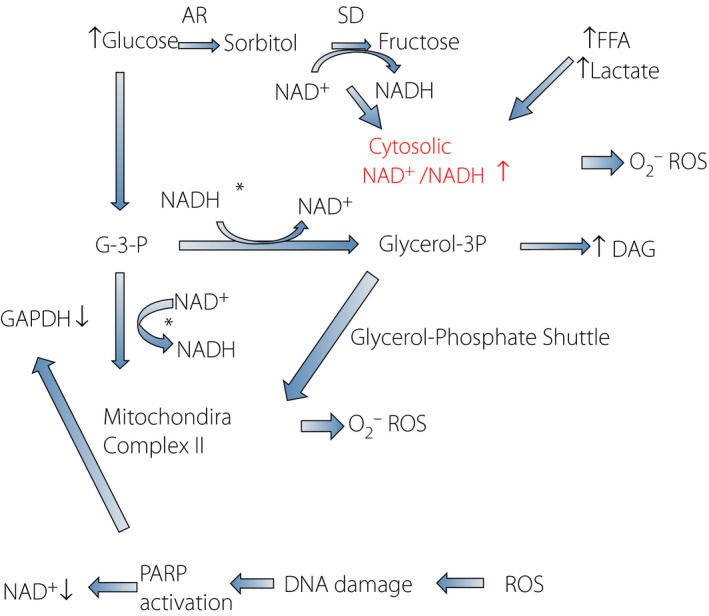Figure 2.

Biochemical cascades postulated to cause diabetic complications. Intracellular hyperglycemia increases in polyol pathway flux, free fatty acids (FFA) and lactate that cause a cytosolic nicotinamide adenine dinucleotide (NAD+/NADH) ratio increase (pseudohypoxia). This redox change induces: (i) production of reactive oxygen species (ROS) from cytosol and mitochondria; and (ii) increased flux to glycerol‐3‐phosphate and diacylglycerol (DAG). An excess of long‐chain acetyl coenzyme A also augments ROS and production of DAG. Increased NADH produces glycerol‐3‐phosphate, which fuels electrons at mitochondria complex II through the glycerol phosphate shuttle by electron transfer from mitochondrial glycerol‐3‐phosphate dehydrogenase. Chronically increased ROS production causes deoxyribonucleic acid damage and activates poly‐adenosine diphosphate ribosyl‐polymerase (PARP), which utilizes NAD+ as a substrate. PARP activation might cause post‐translational modification of glyceraldehyde phosphate dehydrogenase (GAPDH), resulting in inhibition and translocation. AR, aldose reductase; G‐3‐P, glyceraldehyde‐3‐phosphate; SD, sorbitol dehydrogenase.
